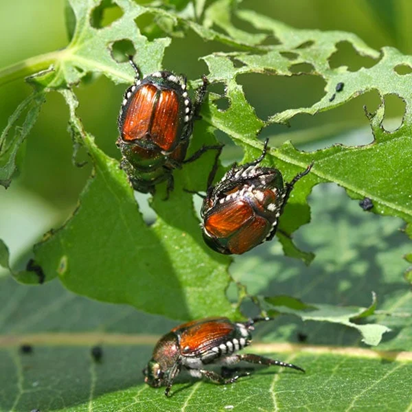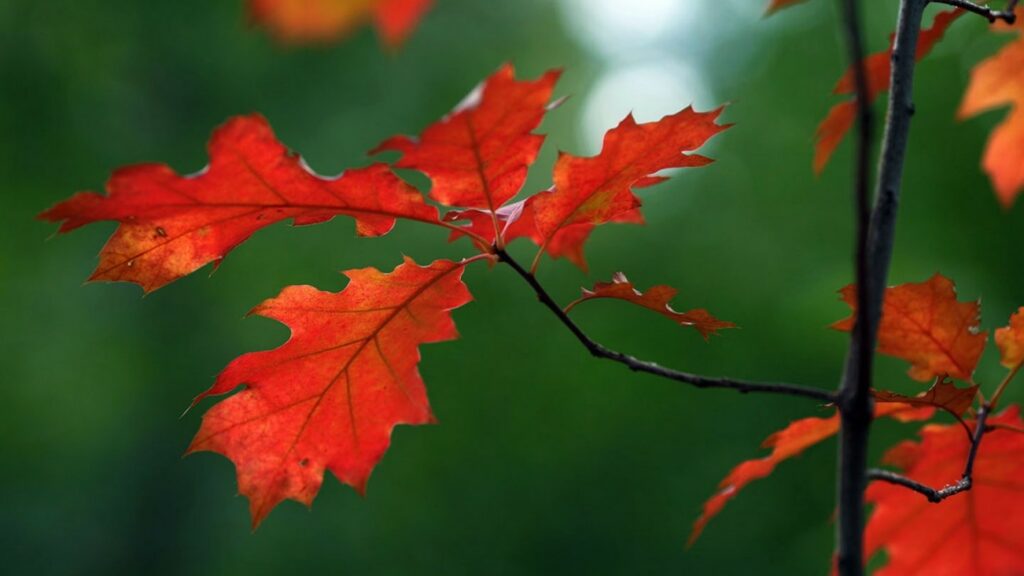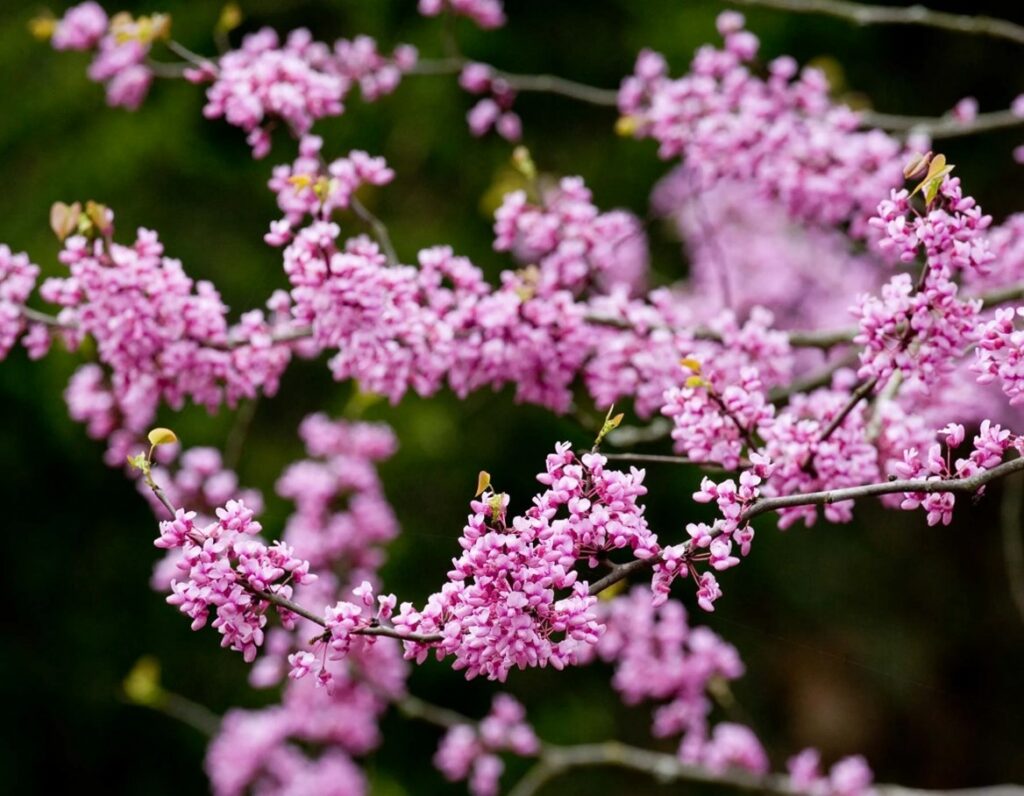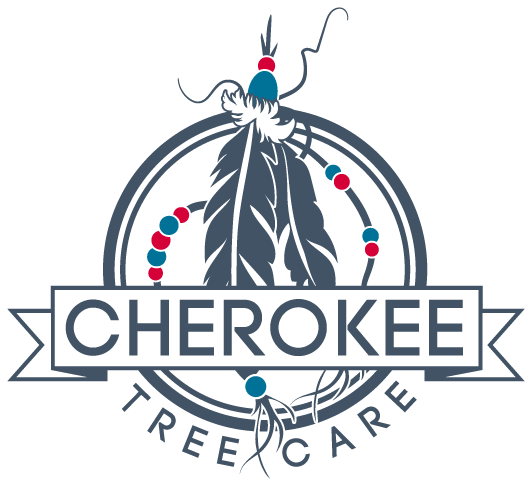In this month’s spring newsletter, we will be discussing upcoming pests to be on the lookout for and how to be proactive in protecting your trees and shrubs, proper pruning times for Oaks and Elms, and native tree species.
Upcoming Pests and Preventative Treatments
Insect emergence isn’t based on our calendar dates, but rather, on temperatures. As our temperatures begin to rise, we can be certain of a few pests that are common in our area as well as some new surprises each year. With a few preventative treatments, we can get a head start on protecting your trees and shrubs.

An insecticide soil drench applies the product into the ground around the root zone. Through the weeks following the application, the product will be taken up through the roots and translocated through the plant. When insects try to feed on the tree or shrub, the product will kill it. This type of product is known as a systemic insecticide. We use this service to protect many of our tree species from Japanese Beetles, Lace bugs, soft scales, and many others.
Another service we offer is a 2-year injection for Ash trees to prevent the Emerald Ash Borer. If you have an Ash Tree, we highly recommend this service if you would like to keep your tree. We have been finding a lot of Ash trees in decline due to this pest in our area.
Fungicide injections can help protect your Elm trees from the deadly Dutch Elm disease and only need to be applied every 3 years.
Inspections can be highly beneficial to your trees and shrubs. Having a trained professional on your property frequently is the best way to prevent damage from insects, diseases, and environmental factors.
Oak & Elm Pruning

In most cases, WHEN you prune your trees is not as important as HOW you prune your trees. However, there is an exception to this rule when talking about the Oaks and Elms in our area. Both species are susceptible to deadly diseases that can be brought in by insects through open wounds. For this reason, these species should not be pruned during the bulk of the growing season.
Regarding Oaks in our area and their susceptibility to Oak Wilt disease, the Missouri Conservation Department states: “STOP PRUNING OAK TREES! Don’t prune mid-March through June! Oaks become more vulnerable to Oak Wilt a couple of weeks before spring budbreak. During this time, fresh wounds on trees can attract insects carrying Oak Wilt spores. Oak Wilt is an aggressive disease that can kill a healthy tree.”
Many American Elms have been killed in our area due to the fungal infection Dutch Elm Disease. There is no cure for Dutch Elm Disease once a tree becomes infected, however, we offer a preventative injection that protects the tree for 3 years.
To prevent open wounds during peak infection times, we avoid pruning Oaks and Elms from Mid-March through June. If you have one of these species that needs pruning, give us a call for a free estimate and we will add you to our calendar during the months of August-February.
Should you only plant native species?

There are many devout native species gardeners and some that say we should only plant native plants. In this portion of the spring newsletter, we will be discussing native species, their benefits, and some limitations to planting them in our landscapes.
What is a native species? A native plant species is one that grows naturally in our area. It has adapted to the region’s climate, soils, and moisture without human intervention. Missouri has a long list of native tree species that have adapted to thrive in our area.
There are many benefits to planting native plants. Since they are adapted to our climate, environmental factors such as weather won’t typically be much of a stressor to the plant. Since they are adapted to our soils, fertilizers generally aren’t always necessary.
While non-native trees might not do as well up against local pests, native trees often don’t have as many pest problems and many regional pests will have natural predators. Additionally, many insects, birds, and animals depend on native trees for food and shelter. They’ll thank you for planting them!
Some Missouri native trees we recommend for landscapes are the Eastern Redbud, Sugar Maple, Bald Cypress, Flowering Dogwood, Black Gum, Swamp White Oak, and many others.
Before you start planning on replacing all the trees on your property for natives, let’s discuss the limitations we face with planting only native species.
Firstly, native plants don’t often look as manicured in our landscapes and tend to have more of a ‘wild’ look. For this reason, many native plant species can be difficult to find at local nurseries, as they aren’t the popular choice with customers.
The most important limitation is the difference between our natural environments compared to our landscapes. Just because a tree originated in your region, doesn’t mean it’s meant to grow in your yard. Much of our native topsoil is removed in the construction process when homes are built. In addition to our soils being modified, many landscapes have irrigation systems, competing turf grass, and leaves are raked away. Landscape soils differ greatly from our native forest soils. Our landscapes often have ‘microclimates’ that can differ from natural conditions due to shade from buildings, heat zones from pavement, and competition from other plants or impeding fences or structures. For these reasons, planting native species does not guarantee success for your landscape. It goes without saying that there is no such thing as a maintenance-free tree.
All of our landscape plants face obstacles and need specialized care to be maintained. Whether you choose a native species or a non-native tree that is growable in our hardiness zone, give your arborist a call to help you determine the right tree for your space. Through a variety of practices such as soil tests, appropriate watering, suitable selection, proper pruning, inspections, and plant health care services, you can have healthy trees that thrive on your landscape.

